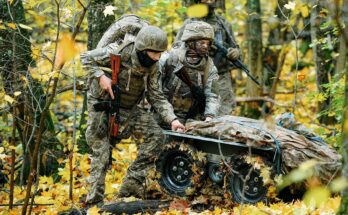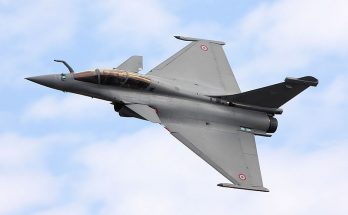A snapshot of recent news from sources around the world on the ongoing Russia-Ukraine war.
 Source: Ukrainian Ministry of Defense
Source: Ukrainian Ministry of DefensePolitical Developments
At a UN Security Council meeting, a U.S. diplomat announced that President Trump wants Russia and Ukraine to negotiate a deal to end the war by August 8, and the U.S. is ready to impose additional measures to secure peace. The statement follows Trump’s earlier threat to impose tariffs and other measures on Russia if no progress is made toward a resolution within 10 days of his Tuesday remarks.
Following a drone attack on Kyiv that killed 26 people, including three children, Ukrainian President Volodymyr Zelensky urged his allies to pursue “regime change” in Russia, arguing that a change in leadership is necessary to prevent future instability. Zelensky’s statement coincided with U.S. President Donald Trump’s condemnation of the war and his renewed threat of sanctions against Moscow if a peace agreement isn’t reached.
President Vladimir Putin said Russia is open to continued peace talks with Ukraine but emphasized that the war is currently going in Russia’s favor. Despite looming U.S. sanctions and calls for a ceasefire, Putin maintained that any resolution must be long-term and secure Russia’s interests.
Former Russian President Dmitry Medvedev warned Trump about Russia’s nuclear capabilities after Trump told him to “watch his words” in response to Medvedev’s criticism of proposed U.S. tariffs. Trump subsequently ordered two nuclear submarines to be “positioned in the appropriate regions, just in case these foolish and inflammatory statements are more than just that,” according to a post on the president’s social media account.
A pro-Ukrainian hacking group claimed responsibility for a cyber-attack that caused Russian airline Aeroflot cancelled more than 50 flights on Monday.
Ukraine arrested one of its air force officers on espionage charges. The officer reportedly leaked information to Russia about the location of F-16 and Mirage 2000 fighter jets in Ukraine.
Poland has detained 32 people suspected of working with Russia to conduct acts of sabotage. One person has been convicted and the others are awaiting trial.
Russia is pursuing a large-scale, state-backed strategy to dominate drone technology by funding startups, expanding production facilities, and integrating drone education into schools, all under the guise of civilian use but heavily focused on military applications. Despite efforts to achieve self-sufficiency, Russia remains dependent on foreign components, especially from China, highlighting a key vulnerability.
Military Assistance to Ukraine
Ukrainian President Volodymyr Zelenskyy is negotiating a potential $10–30 billion deal to exchange Ukrainian drones for U.S. air defense systems and munitions. While Kyiv’s export restrictions have hindered Ukraine’s defense industry growth, this deal could signal a shift, though details remain uncertain. NATO nations and the U.S. have shown increasing interest in Ukrainian military technology, prompting coproduction partnerships, especially in Europe. However, questions remain over export controls, internal corruption, and the risk of losing Ukraine’s manufacturing advantages if production moves abroad.
The U.S. Senate Appropriations Committee has recommended providing around $1 billion in security assistance for Ukraine in its markup of the Pentagon’s FY26 budget request. The legislation includes $800 million for the Ukraine Security Assistance Initiative (USAI), which is used to procure new weapons for Ukraine directly from manufacturers, as well as $225 million for the Baltic Security Initiative, much of which would ultimately benefit Ukraine. The legislation must still be negotiated with the House and approved by the president, making the fate of the security assistance unclear.
Separately, a bipartisan pair of U.S. senators introduced legislation to provide $54.6 billion in military aid to Ukraine over the next two years. The bill faces headwinds with many Republicans opposing aid to Ukraine and the administration slashing foreign aid.
The U.S. has approved a foreign military sale agreement for the repair and overhaul of M109 self-propelled howitzers operated by Ukraine. The agreement is valued at $150 million. The deal would provide work for BAE Systems, Daimler Truck North America, and Allison Transmission.
On July 28th, 2025, U.S. defense company Auterion announced that it will provide 33,000 Skynode artificial intelligence guidance kits for Ukrainian drones, funded by a $50 million Pentagon contract. The kits enable manually-piloted strike drones to autonomously track and hit targets up to a kilometer away. Ukrainian forces have been seeking ways to make their growing drone forces immune to the increasingly dense signal jamming deployed by Russia. Prior to this announcement, Auterion had previously shipped thousands of Skynode kits to Ukraine.
Drone manufacturer TEKEVER donated 100,000 euros to the Prytula Foundation to help equip a Ukrainian reconnaissance command post, aiming to improve battlefield intelligence and operational effectiveness. The company has also expanded its local presence in Ukraine to support drone operations, training, and maintenance amid ongoing conflict.
Battlefield Updates
Russia launched a total of 6,443 drones and missiles against Ukraine in July, according to the Ukrainian Air Force. That figure is around 13 percent higher than the previous month and represents the largest number of weapons by Russia in a single month since the start of the war.
Ukraine launched a drone attack on July 26 against the Signal radio plant in Russia, a facility around 500 kilometers from Ukraine-controlled territory that manufactures electronic warfare equipment and aircraft. Russia says it shot down 54 Ukrainian drones across eight regions during the attack.
Another Ukrainian drone attack targeted St. Petersburg on Sunday as Russian President Vladimir Putin was in the city to celebrate Navy Day. Russia cancelled this year’s Navy Day parade due to security concerns.
A Ukrainian army training area was hit by two Russian Iskander missiles, killing three soldiers and wounding 18 others, according to Ukrainian authorities. Moscow claims there were 200 killed or wounded.
Russia lost a medium-altitude, long-endurance (MALE) unmanned air vehicle (UAV) during a flight over Ukraine. Kyiv claims the Orion MALE UAV was hit by a first-person-view (FPV) drone. The Russian MALE UAV is capable of carrying air-to-surface munitions. Ukrainian officials said the wreckage of the Orion MALE UAV contained large amounts of technology Moscow acquired from foreign suppliers. Ukraine also used an FPV drone it engage a Russian Forpost-R UAV.
Russia claims it captured the town of Chasiv Yar in eastern Ukraine after a protracted battle that lasted nearly 18 months. Ukraine rejected the claim and said the town remained under control of the 11th Army Corps. However, video posted online showed Russian flags being flown beside ruins of the town.
For 50 years, Forecast International intelligence reports have been the aerospace and defense industry standard for accurate research, analysis, and projections. Our experienced analysts compile, evaluate, and present accurate data for decision makers. FI's market research reports offer concise analysis of individual programs and identify market opportunities. Each report includes a program overview, detailed statistics, recent developments and a competitive analysis, culminating in production forecasts spanning 10 or 15 years. Let our market intelligence reports be a key part of reducing uncertainties and mastering your specific market and its growth potential. Find out more at www.forecastinternational.com
image sources
- Germany Gepard SPAAG: Ukrainian Ministry of Defense



